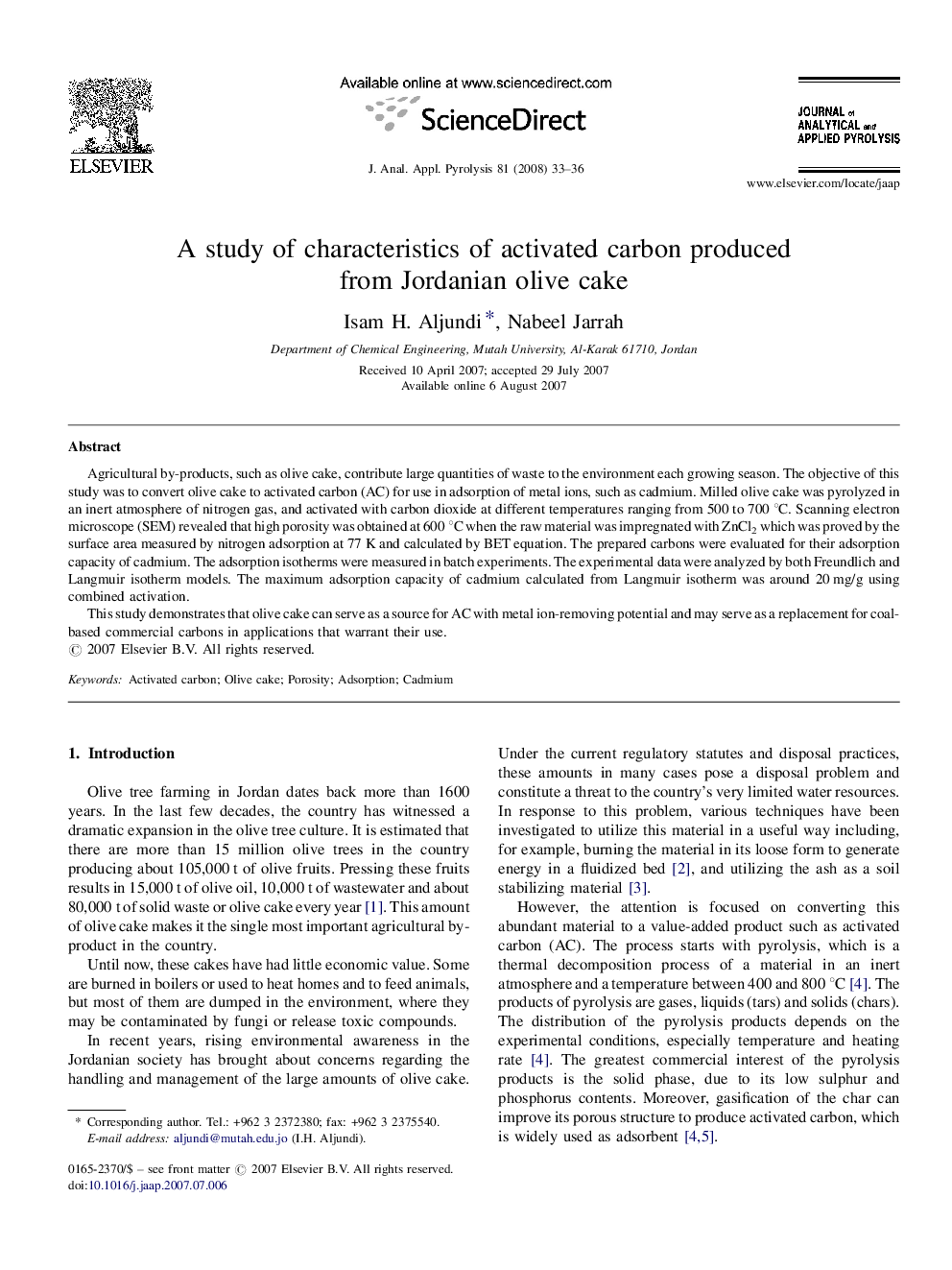| Article ID | Journal | Published Year | Pages | File Type |
|---|---|---|---|---|
| 1198127 | Journal of Analytical and Applied Pyrolysis | 2008 | 4 Pages |
Agricultural by-products, such as olive cake, contribute large quantities of waste to the environment each growing season. The objective of this study was to convert olive cake to activated carbon (AC) for use in adsorption of metal ions, such as cadmium. Milled olive cake was pyrolyzed in an inert atmosphere of nitrogen gas, and activated with carbon dioxide at different temperatures ranging from 500 to 700 °C. Scanning electron microscope (SEM) revealed that high porosity was obtained at 600 °C when the raw material was impregnated with ZnCl2 which was proved by the surface area measured by nitrogen adsorption at 77 K and calculated by BET equation. The prepared carbons were evaluated for their adsorption capacity of cadmium. The adsorption isotherms were measured in batch experiments. The experimental data were analyzed by both Freundlich and Langmuir isotherm models. The maximum adsorption capacity of cadmium calculated from Langmuir isotherm was around 20 mg/g using combined activation.This study demonstrates that olive cake can serve as a source for AC with metal ion-removing potential and may serve as a replacement for coal-based commercial carbons in applications that warrant their use.
